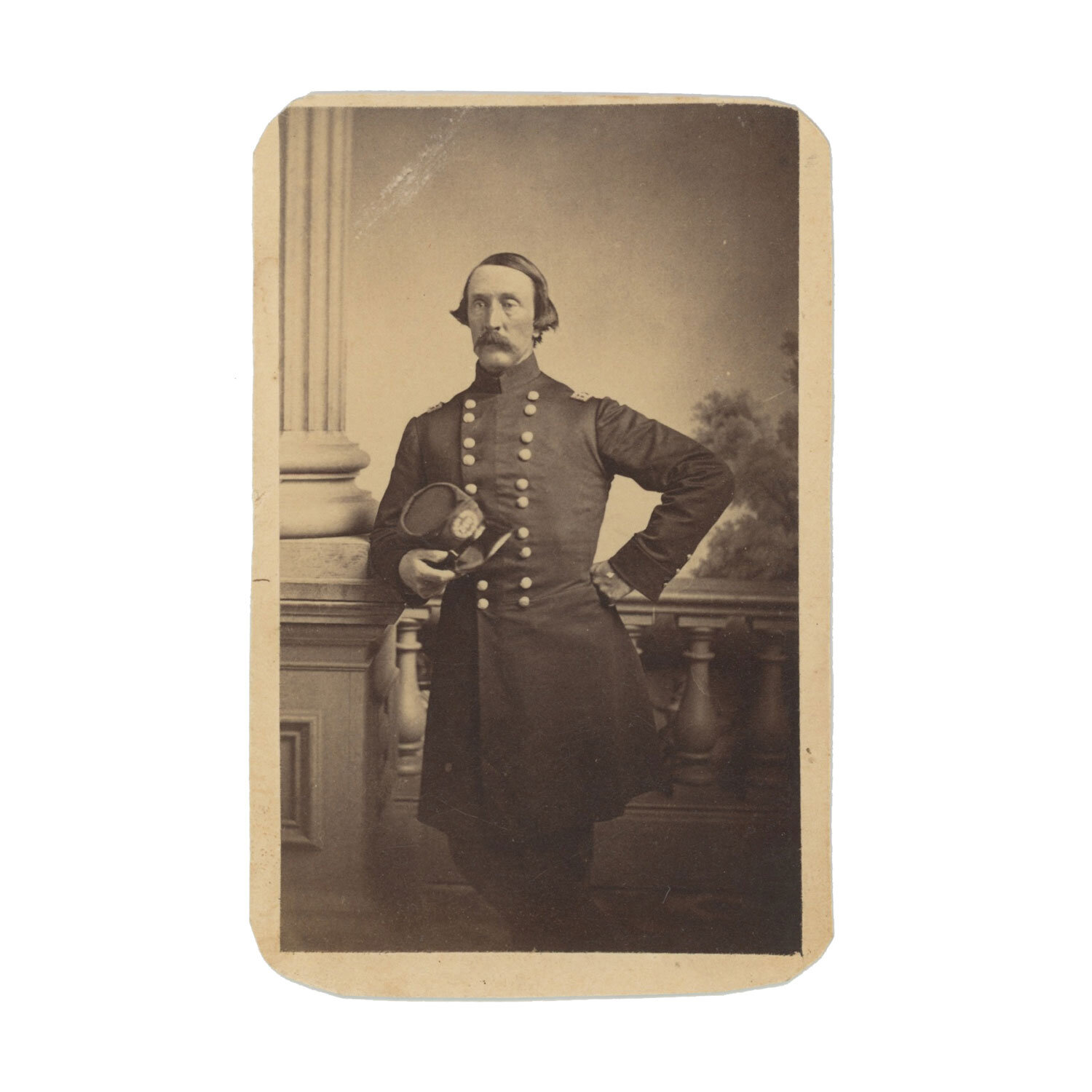Early-War CDV by Quinby & Co., Charleston, of South Carolina Militia General Patrick Henry Nelson, Killed at Petersburg as Lieut. Colonel of 7th South Carolina Battalion
Early-War CDV by Quinby & Co., Charleston, of South Carolina Militia General Patrick Henry Nelson, Killed at Petersburg as Lieut. Colonel of 7th South Carolina Battalion
Item No. 1805647
CDV by Quinby & Co., Charleston, of Patrick Henry Nelson as Brigadier General of South Carolina Militia. Nelson stands in a 3/4 pose dressed in a dark blue militia frock. Stars are partially visible on his shoulder straps. The device affixed to the front of his cap is a laurel wreath with “SCM” at the center. Very good condition with very light 1/2” abrasion in the far upper-left corner of the albumen. The mount has been trimmed for an album placement to 2 3/8” x 3 3/4”. Lightly toned. Early-war images of P. G. T. Beauregard, D. R. Jones, and S. D. Lee were made by Quinby before this same backdrop.
Patrick Henry Nelson still wore the blue uniform of a major general in the South Carolina Militia when he posed for this early-war image at the Charleston gallery of Quinby & Co. Prior to the war Nelson was a wealthy planter in the Sumter District, owning two plantations and over a hundred slaves. He commanded the 2nd Brigade of South Carolina Volunteers on Morris Island during the bombardment of Fort Sumter. In early 1862 he was commissioned lieutenant colonel of the 7th South Carolina Battalion, which, in addition to garrison duty around Charleston, saw action at Fort Wagner and Fort Johnson. In early 1864, Nelson and the 7th South Carolina, as part of Johnson Hagood’s South Carolina Brigade, were ordered to the Virginia front, where they joined General Robert Hoke’s Division. Nelson led his men at the battles of Swift Creek and Drewry’s Bluff, and was described by Hagood as “a gentleman of high culture and fine presence, and an excellent officer.” On June 24, during the Second Offensive at Petersburg, Nelson and his men were part of an ambitious attack designed to reclaim much of the entrenchments lost in the initial June 15 fighting. Colonel Nelson commanded a picked group of about 400 men acting as skirmishers. The attack turned into a fiasco, however, after Hagood was prompted to attack before his support had arrived. Nelson mounted the parapet and “without speaking he drew his handkerchief from his breast and raised it aloft. The men sprang over the parapet with a yell” and advanced toward the federal rifle pits. Expecting the attack, Union artillery opened on the Carolinians, and when their supports failed to arrive, Nelson’s men were stuck in no-man’s-land. Some fought on while many surrendered. Colonel Nelson disappeared during the attack and his fate was never determined, although there was an unsubstantiated rumor that he had been captured and murdered by black troops.

